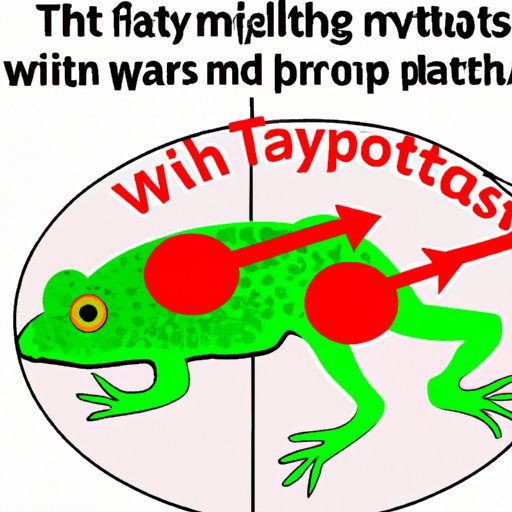
Can You Get Warts from Toads?
Warts are a common skin condition that can be unsightly and sometimes painful. Many people believe that warts are caused by toads and other amphibians, but is this really true? In this article, we will explore the myth of toads causing warts and separate fact from fiction.
Debunking the Myth: Can You Really Get Warts from Toads?
For centuries, people have believed that toads are to blame for warts. The idea is that touching a toad or other amphibian can cause the transmitted virus to infect the skin and form a wart. However, there is no scientific evidence to support this belief.
The origin of this myth can be traced back to ancient Europe, where toads were thought to be bewitched and associated with witchcraft. The idea of toads causing warts was eventually carried over to North America, where the myth continues to persist today.
The Science Behind Warts: Can Toads Really Transmit Them?
Warts, medically known as verruca vulgaris, are caused by the human papillomavirus (HPV). This virus can infect the outer layer of skin and cause it to grow rapidly, resulting in a wart. The virus is highly contagious and can be easily transmitted through skin-to-skin contact, but there is no evidence that toads or other animals can spread the virus.
In fact, there are over 100 different types of HPV, and each type is associated with specific kinds of warts. Humans are the only known carriers of HPV, and warts only grow on human skin.
Top 5 Myths About Warts and Toads Debunked
While the myth of toads causing warts is a popular one, there are many other myths and misconceptions about warts and toads that are not true. Here are the top five:
- Warts have roots. Warts do not have roots. They grow on the surface of the skin and are only held in place by tiny blood vessels.
- Warts can be cured by cutting them off. Cutting a wart off can be painful and can actually spread the virus to other parts of the body.
- Warts are only contagious when they are visible. Warts can be contagious before they are visible and can continue to be contagious even after they have disappeared.
- Toads are slimy and poisonous. Toads are not slimy or poisonous. While they do secrete a mild toxin from their skin, it is only dangerous if ingested.
- Toads are attracted to warts. Toads are not attracted to warts. They are more likely to be attracted to insects and other small animals.
It is important to fact-check before believing something. The internet is filled with false information and urban legends that can lead people to take unnecessary risks.
Exploring the Connection Between Warts and Amphibians
While toads do not cause warts, there is still a connection between warts and amphibians, particularly frogs and toads. Some species of frogs and toads secrete toxins from their skin that have been used in the development of medicine.
There are also certain types of amphibians that are susceptible to viruses that cause growths, similar to warts, on their skin. These growths can sometimes be fatal to the animal.
However, it is important to note that these growths are not the same as human warts and cannot be transmitted to humans.
The Truth About Warts and Toads: What You Need to Know
While toads do not cause warts, it is still important to take precautions when handling them to prevent the spread of disease. Here are some tips:
- Wash your hands thoroughly after handling toads or any other animals.
- Avoid touching your face or other parts of your body while handling toads.
- If you have a cut or open wound, avoid handling toads or other animals that may be carrying bacteria or viruses.
Toad Facts vs. Fiction: The Truth About Warts
There are many misconceptions about toads that have contributed to the myth of toads causing warts. Here are some facts:
- Toads are not slimy or poisonous. They secrete a mild toxin from their skin that is only dangerous if ingested.
- Most species of toads are harmless and play an important role in the ecosystem by controlling insect populations.
- While some species of toads can secrete toxins from their skin, this is not a defense mechanism against predators. Instead, it is more likely a way to prevent water loss and protect against microbes.
Warts and Toads: Separating Fact from Fiction
In conclusion, the myth of toads causing warts is not supported by scientific evidence. Warts are caused by the human papillomavirus and can only be transmitted between humans. That being said, it is still important to practice good hygiene and take precautions when handling toads or any other animals to prevent the spread of disease.
It is important to remember that not everything we hear or read is true. It is important to fact-check and seek out scientific evidence before believing something and making decisions based on that belief. By practicing critical thinking and seeking out factual information, we can avoid unnecessary risks and make informed decisions.




